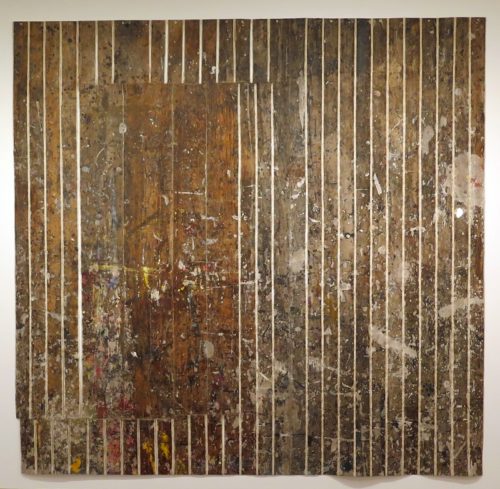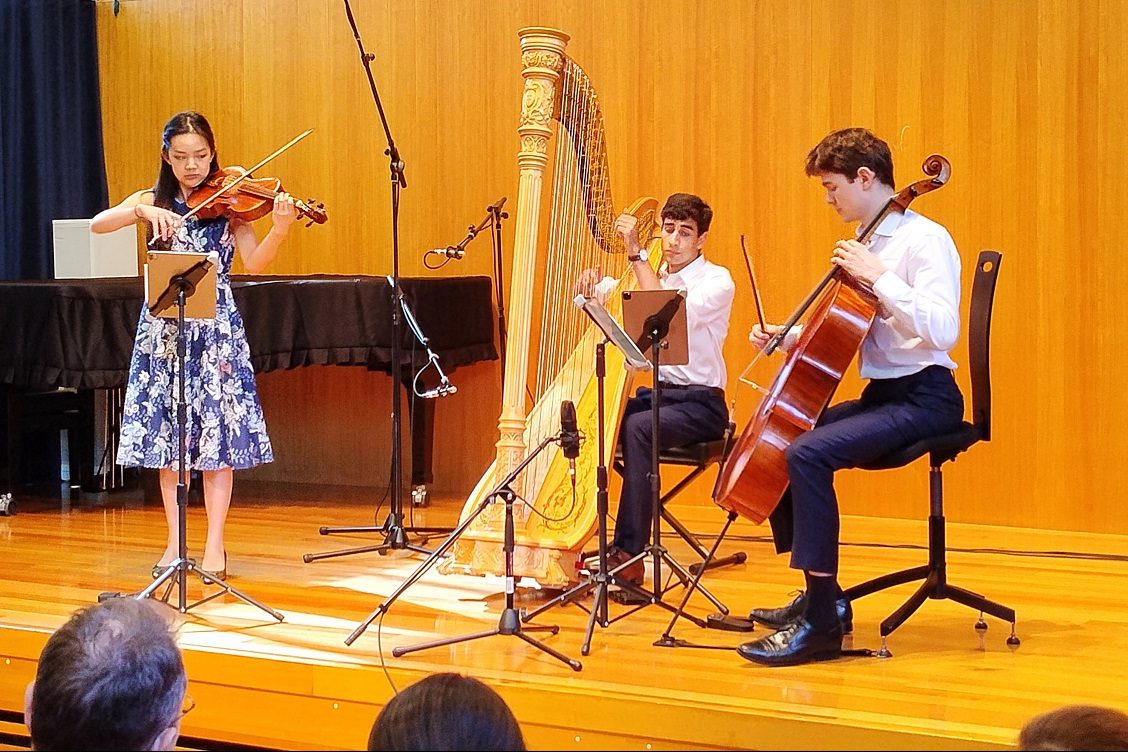
Art / “Fabrications”, Nicole Ellis. ANU Drill Hall Gallery, Canberra. February 19-April 11. Reviewed by ROB KENNEDY.
SURVEYS often reveal the rich and complex history of an artist’s output, and this one that covers 30 years of Sydney-based artist Nicole Ellis’ art-making also displays a strong sense of the damaged and what remains.
Curator Tony Oates has filled the Drill Hall Gallery with more than 70 works from Nicole Ellis. These range from quite small to large-scale artworks that speak of the beauty in decay and the discovery of what lies underneath.
Someone said to me that when looking at the works in the exhibition, it reminded her of a very old house, where inside, you see the layers of history on the walls that have been revealed through renovation and rejuvenation; that description most aptly fits this survey.

Ellis’ idea of the destroyed and decayed is best seen in her large-scale work titled “Site Work 6”, which I’m told came from the floor of the studio of Australian artist Sydney Ball. This impressive work tells the story of a journey of years of creation and neglect. It is outstanding.
Many of the “fabrications” in this survey have an intentionally weathered look. There’s a scraping back in some, and in others, she has added paint to the surface to show textures and memories of repair and reconstruction.
Horizontal and vertical patterns are ever-present in the works on show in this survey. Interestingly enough, not one diagonal, unless you take the work out of context. I wonder of the intentionality of this.
The objects in “Cornucopia: Small Offerings”, are something again. Many are like a puzzle that have opened out and reveal themselves to the viewer. Complex ideas are interwoven with the simple and found objects, such as cupcake liners, lolly packets and seals from the capsules on wine bottles. They are intimate and revealing.

The seven multicoloured “Poles” are wrapped in fabric. Not unlike some of the stitched wrappings you see on poles, trees and objects around cities, these poles seem to be an extension of the ideas in many of her acrylic paint on fabric works. The poles remind us of spiritual or ritual objects.
Inspired by the use of fabrics from a relative in her youth, this passion is forefront in her art today. Bed linen and an array of chequered cloths make up a selection of medium-scale swatches. Many fashion, furniture and interior designers would be familiar with these swatches. Though I’m not sure what they’re saying.
I do know this survey says that what’s on the surface is made up of the remains of historic content that we’ve all seen, but few inspect and reveal things as Nicole Ellis does.
Who can be trusted?
In a world of spin and confusion, there’s never been a more important time to support independent journalism in Canberra.
If you trust our work online and want to enforce the power of independent voices, I invite you to make a small contribution.
Every dollar of support is invested back into our journalism to help keep citynews.com.au strong and free.
Thank you,
Ian Meikle, editor




Leave a Reply